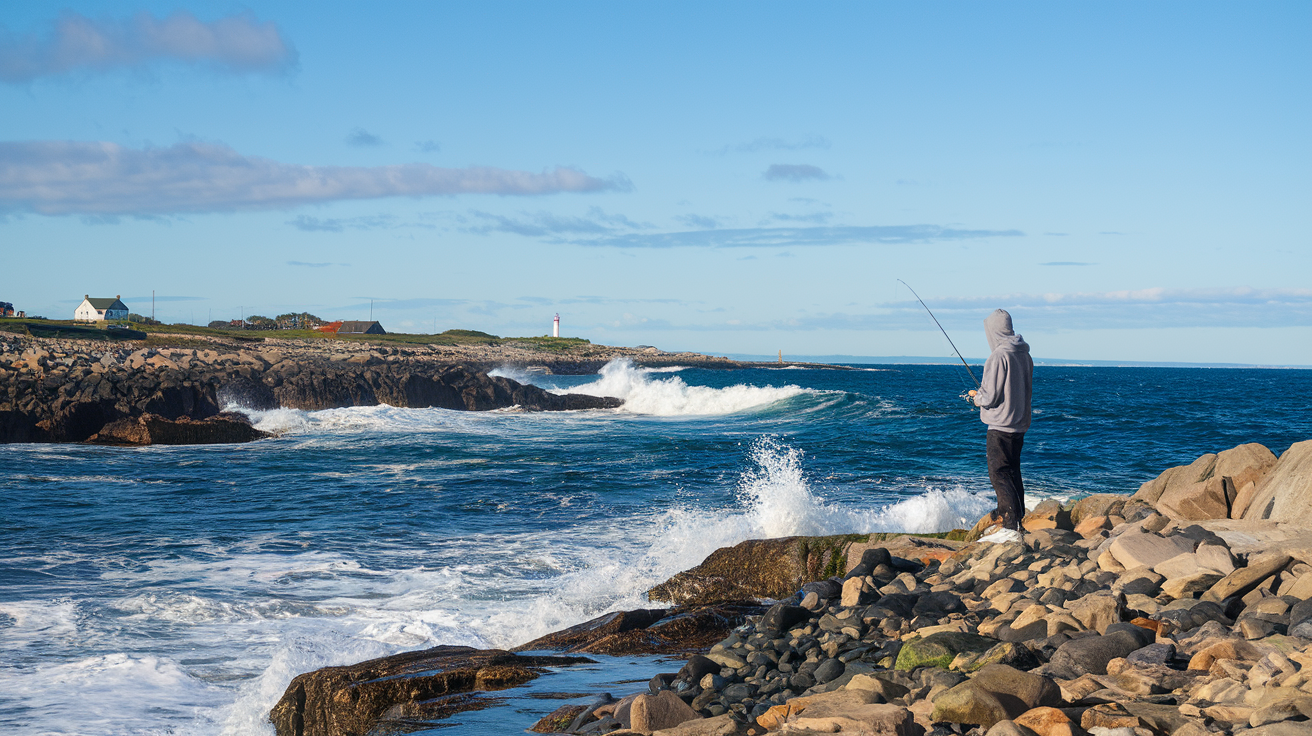Why Small Changes in Wave Height Can Create Big Dangers for Boaters, Rock Fishermen, and Beachgoers
If you spend time on the water—whether boating, fishing from the rocks, or just enjoying the beach—you probably keep an eye on the waves. Most people assume that if a wave is twice as high, it will have twice the impact. But in reality, even a small increase in wave height can make a massive difference in the amount of water moving and the force it delivers.
This is why boaters can suddenly find themselves swamped, why rock fishermen get washed off seemingly safe ledges, and why beachgoers sometimes get caught in powerful surges that weren’t there minutes ago.
With DECKEE’s Boating Forecast, you can see the range of wave heights expected throughout the day, helping you make informed decisions about when to go, when to turn back, and what risks you might face on the water.
Why Do Bigger Waves Matter So Much?
Waves are three-dimensional, meaning their power increases in all directions—not just up.
• If a wave doubles in height, the amount of water it moves increases by eight times, not just two.
• Even if a wave is just 50% taller, the force it brings can be three to four times stronger.
This happens because a larger wave isn’t just higher—it’s also wider and deeper, meaning far more water is moving with it.
This effect can be surprising and dangerous, especially in coastal environments where conditions change quickly.
By using DECKEE’s wave height forecast, you can see how much the waves are expected to vary, so you’re not caught off guard when conditions shift.
For Boaters: When a Manageable Wave Becomes a Swamping Hazard
If you’re out on a boat—especially a smaller recreational vessel—wave height makes all the difference in how safe your ride is.
• A 1-meter (3-ft) wave might feel like a gentle swell.
• A 2-meter (6-ft) wave isn’t just twice as big—it’s carrying eight times more water.
That means if you misjudge a wave, it can suddenly crash over your bow, swamp your deck, or make bar crossings far more dangerous than expected.
App tip: Check DECKEE before you launch – The forecast will show you the range of wave heights expected, so you can prepare for how much conditions might change throughout the day.
For Rock Fishermen: Why “Just One Big Wave” is More Than That
Rock fishing is one of the most dangerous recreational activities in Australia, with multiple drownings every year. Often, the story is the same: “A freak wave came out of nowhere.”
But these aren’t freak waves—they’re just slightly bigger than normal. And because volume scales so quickly with height, a small increase can turn a splash into a deadly surge.
• A 1.5-meter (5-ft) wave might splash your boots.
• A 2-meter (6.5-ft) wave could sweep you off the rocks entirely.
That extra half-meter doesn’t seem like much, but it means way more water is surging over the ledge, increasing the chance of being knocked down and dragged into the sea.
App tip: DECKEE’s forecast can help you spot dangerous fishing conditions – By checking the range of wave heights, you can avoid times when larger waves are expected to roll through.
For Beachgoers: The Power of a Slightly Bigger Shore Break
Many swimmers underestimate waves breaking on the shore. A small shore break might be fun to jump through, but if wave height increases—even slightly—it can turn from harmless to dangerous.
• A small wave (0.5 meters / 1.5 ft) gently pushes you.
• A 1-meter (3-ft) wave can knock over an adult and pull them into a rip.
• A 1.5-meter (5-ft) wave can slam you onto the sand hard enough to cause spinal injuries.
This is why swimmers, surfers, and bodyboarders need to be extra careful when wave conditions change. Even a small increase in size transforms the water’s power.
App tip: Check DECKEE before heading to the beach – Knowing the range of wave heights expected helps you decide if conditions will be safe for swimming or if it’s better to stay on the sand.
What You Can Do to Stay Safe
Since even a small increase in wave height can mean a huge increase in danger, here’s how to protect yourself:
For Boaters:
✅ Always check DECKEE’s wave height forecast before heading out, especially for bar crossings or exposed coastlines.
✅ If waves are picking up, change course or head in before they become unmanageable.
✅ Remember that small increases in wave height can dramatically change conditions.
For Rock Fishermen:
✅ Never assume a wave “won’t reach you”—even a slightly taller wave carries way more water.
✅ Wear a life jacket and fish with others.
✅ DECKEE can show when wave heights are increasing, helping you avoid dangerous periods.
For Beachgoers:
✅ If waves are getting bigger, be aware that rip currents will get stronger too.
✅ Stay out of powerful shore breaks, where even waist-high waves can cause injuries.
✅ DECKEE’s wave height reports help you decide if the conditions are safe before you swim.
Final Thought: Small Waves Can Become Big Problems
Waves are deceptive. A small increase in height means a massive increase in volume and power, which can quickly turn a safe situation into a dangerous one.
Whether you’re boating, fishing, or just playing in the surf, understanding how waves scale can be the difference between a fun day and a disaster. DECKEE’s Boating Forecast gives you the information you need to make the right call before heading out.
Check DECKEE before your next trip—because even small waves can have big consequences.



